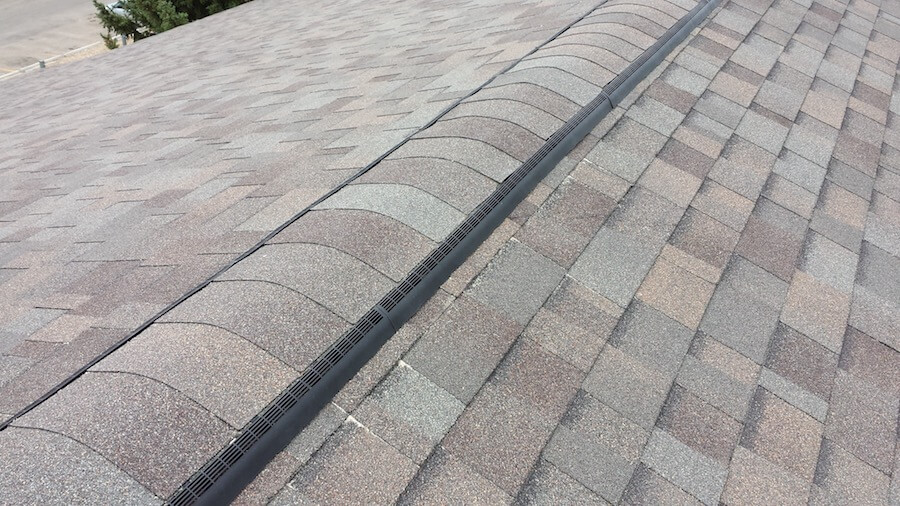
January 26, 2017
Roof ventilation – Part 2
As a professional roofing contractor, it’s our obligation not only to take care of our clients’ roofs but also their roof accessories. Small items such as roof vents can have significant impacts. Many houses in Edmonton do not meet or barely meet the minimum ventilation requirement. Ice damming and water infiltrations due to inadequate ventilation can cost homeowners significant financial losses and troubles in a long run. A simple way to solve these problems is to prevent them from happening in the first place, and that’s why we are here. At Safe Roofing, we are constantly researching and providing the best information for our valued clients.
The most popular exhaust vents used in Edmonton’s sloped roofs are whirlybirds and box vents. In order to remove heat and moisture from the ceiling area, whirlybirds are either wind-driven or mechanically driven. Box vents are also called “low profile vents”, which use winds and natural convection to move heat and moisture from the attic space.
Both whirlybirds and box vents are not ideal for houses in Edmonton. Wind-driven whirlybirds would require sufficient amount of winds passing through their turbines to work. For example, for a turbine that has a diameter of 30 cm, it would need a wind speed of 8 km/hour to remove approximately 10 cubic meters of air per minute. Mechanically driven whirlybirds will automatically generate winds at all time, but they incur energy cost and maintenance.
Box vents are the most widely used vents in Edmonton. They cost approximately $10 each and are easy to install compared to whirlybirds (wind-driven whirlybirds need to be installed perfectively level, otherwise the turbines do not work). However, in order for them to work effectively, a number of box vents must be installed on the correct locations. The main drawback for box vents is their height. They cannot withstand snowstorms without being completely covered during winter.
As Safe Roofing, we trust Ventilation Maximum’s ventilators. Both whirlybirds and Maximum vents function the same, except the latter does not have any turbines to turn. They function the same way as a chimney would work – a combination of wind and pressure differentials would draw out the warm air from the attic space. For winds as low as 6.4 km/hour, these vents are able to capture the full effect of the wind, producing drawing power and ventilating a larger area compared to whirlybirds and box vents. For example, a house with ceiling area of 1,200 sq. ft. would require a minimum of 6 box vents, while only 1 Maximum ventilator (model #301-12) is required for the same house, and would be effective all year round.
Some detailed readers may recall Part 1 of the article mentioned that the minimum requirement is 1:300 or 1:150. Assuming the ceiling area is 1,200 sq. ft., then the calculated vent area would be 4 sq. ft. (1,200/300) based on the 1:300 rule. If distributed equally, 2 sq. ft. would be at ridge and 2 sq. ft. at soffit.
Maximum’s model #301-12 has the net ventilation area of 144 sq. inches (equal to 1 sq. ft.). For a house that has 1,200 ceiling area, then it would require at least two #301-12’s. The question is, why only one ventilator is mentioned in the previous paragraph then?
To answer the question, the existing code only measures the net free air and does not take into account the drawing power or the air exchange rate the Maximum ventilators have. In other words, the code was written for passive or low profile vents. Model #301-as can ventilate an area up to 1,200 sq. ft. based on a combination of net free air, tested and proven drawing power and air exchange rate.






